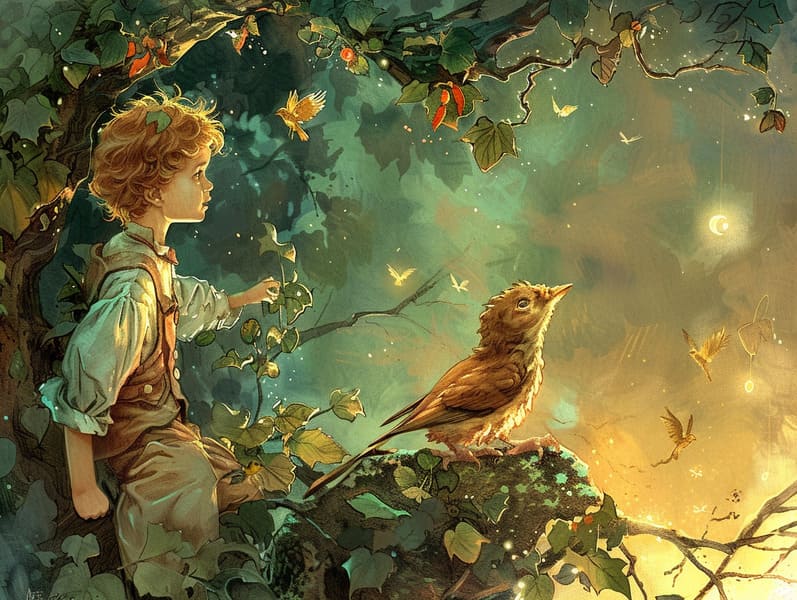The Beginning of Bedtime Fairy Tales with the Consistent Grandeur.
The Beginning of Bedtime Fairy Tales with the Consistent Grandeur.
Blog Article

Popular fairy tales have historical significance. These tales have been shared from one generation to the next well before they were ever documented. They developed from a variety of societies, including Eastern traditions. They were initially passed along among elders, often carrying themes and messages concerning the societal norms and beliefs of the time.
The famous Grimm duo, the two Grimm brothers, were among the first to gather and publish many of these beloved stories. Their collection, "Grimm's Folk Tales," included stories like "The Story of Cinderella," "Hansel and Grethel," and "Snow White," which have since become hallmarks in the world of traditional fairy tales. Similarly, Hans Christian Andersen's whimsical narratives, such as "The Mermaid," and "The Duckling's Story," have captured hearts worldwide, ensuring their place in the pantheon of famous fairy tales.
Despite being ancient, fairy tales remain as pertinent as ever, especially as bedtime stories for kids. These magical stories are now available in numerous formats, including artistically illustrated books, magical animations, and web-based fairy tales.
Their persistent charm can be traced to several fascinating points:
Key Lessons: Ancient fairy tales often convey important moral lessons. Narratives like "The Boy Who Cried Wolf" teach the benefit of truthfulness, while "The Tortoise and the Hare" exemplify the qualities of tenacity and modesty. These tales offer young readers clear distinctions between virtue and vice, developing their moral compass in a tender yet important way.
Compassion and Knowledge: Traditional fairy tales frequently depict figures facing problems and hurdles, fostering young listeners to resonate with their struggles and cheer for their triumphs. For instance, "Beauty and the Beast" teaches us the virtue of looking beyond appearances to realize the true being of a character, developing compassion and perception.
Cultural Recognition: Many ancient fairy tales are deeply embedded in the cultural contexts from which they arose. Learning from these fairy tales can provide illuminating insights into different cultures, developing a sense of world understanding and knowledge.
Imagination and Creativity: The supernatural elements in traditional fairy tales—fairy godmothers—enhance children’s creative dreams. These stories bring readers to otherworldly realms, kindling imaginative dreams and a sense of marvel that continues a lifetime.
Old fairy tales are not only enchanting but also edifying. They act as magical tools in cultivating various intellectual and emotional capacities in children. When ancient fairy tales are told out loud, they foster verbal skills by offering new language and sophisticated sentence structures. This practice also promotes listening skills and attention span, as kids follow the story, excited to see what happens next.
Furthermore, talking about the themes and characters of classic fairy tales can develop reasoning skills and critical thinking. Young readers learn to pinpoint patterns, foresee events, and grasp cause and effect. These talks also aid the young voice their thoughts and feelings, contributing to their emotional intelligence.
In today’s technological era, the prevalence of web-based fairy tales has made these fairy tales more attainable than ever. Web-based platforms and programs give huge assortments of timeless fairy tales that can be read or played anytime, anywhere. Fairy tales told out loud are particularly common, featuring an engaging way for children to delight in these charming stories. Voice books and narrated videos carry characters and settings to life, often augmented by bewitching harmonies and musical scores that improve the tale journey.
The timeless fascination of classic fairy tales lies in their ability to change to changing times while staying true to their central values. Contemporary adaptations of these stories often introduce more diverse figures and modern settings, making them relatable to today’s audience. However, the fundamental themes of boldness, warmth, and fair-mindedness remain unchanged, continuing to resonate with children of all ages.
Timeless fairy tales also offer a sense of peace and website comprehensibility. They allow a neat narrative with a transparent beginning, middle, and end, often wrapping up with the finalization of conflicts and the triumph of justice over injustice. This constancy can be placating for little ones, delivering a sense of reliability in an ever-changing world.
Classic fairy tales continue to fascinate and instruct new generations, maintaining their appeal and importance in modern society. As children's night stories, they introduce a perfect blend of fascination and comprehension, facilitating moral values, empathy, and creativity. The accessibility of digital storybooks and the prevalence of fairy tales spoken certify that these timeless tales remain within reach to new generations.
By retaining and conveying these stories, we continue to glorify the rich tapestry of tales and cultural heritage. Whether you are seeing a beautifully illustrated book, viewing a online collection, or playing an spoken story, the charm of children's fairy tales is always within reach. These narratives illustrate of the invariable essence of tales and its ability to join us across time and space.
Even if you are viewing a artistically illustrated book, enjoying a internet library, or listening on an read-aloud story, the enchantment of old fairy tales is always within reach.
These stories point out of the continued power of fairy tales and its ability to join us across centuries and lands, creating a bond that delights and instructs alike.